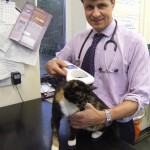Heat Stroke And How To Prevent It In Your Pet
Our Summer Newsletter has arrived, it includes a few tips to keep your pet fit and well at this time of year. Keeping Cool! Paddling pools may help keep dogs cool and they should have free access to water at all times. Heat stroke is a common, and serious problem, learn how to avoid it here.
Insect alert!
Bees and wasps are tempting to play with for both cats and dogs but will deliver a nasty sting if provoked! These are painful and can cause sudden swellings on faces or paws. Most stings will benefit from prompt veterinary attention. Find out some of the other hazards to watch out for in our Summer News.
Guinea pigs can live in or outdoors
but it is important they have enough space to run and play. Our Summer Newsletter discusses some of the things you need to be aware of to keep your piggies happy and healthy. They are susceptible to mite infections, the signs to watch out for are included here.
We hope you enjoy reading our Summer Newsletter, if you have any questions on the items mentioned contact our friendly team for further advice.







